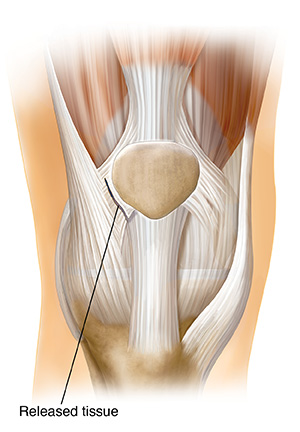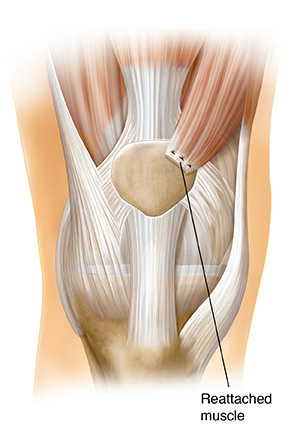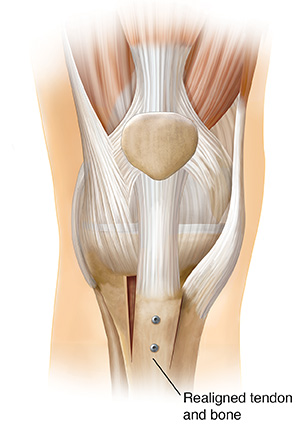Some procedures may be done using arthroscopy, a method that uses tiny incisions and special tools to look and work inside the knee joint. Other procedures need open surgery. The kneecap can be realigned to improve its tracking. To do this, soft tissue and bone may be cut, tightened, or moved.
Surgery
Surgery may be used when pain severely limits your activities. Or it may be done when a rehab program isn’t helping enough. Several nonsurgical treatments may be tried before surgery.
Releasing tissue (lateral release)
This is done with either open surgery or arthroscopy. Releasing (cutting) the retinaculum reduces the pull on the kneecap so that it moves into its correct place. The retinaculum is a band of tissue on both the inside and the outside of the kneecap that assists its motion. Releasing a plica band may also reduce pain. Plica bands are thick, fibrotic bands that may be found in several areas inside the knee joint.
Moving a quadriceps muscle (quad transfer)
This procedure balances pull from the upper leg and is done through open surgery. Part of the muscle is detached. Then it's reattached at a new place on the kneecap.
Shifting the attachment of the patellar tendon (patellar realignment)
This procedure improves tracking and is done using open surgery. Part of the tendon and the bone underneath are moved to a new location.
Recovery
As you recover, take it easy at first. Follow the instructions of your surgeon. Your knee may be bandaged, wrapped, or iced to keep swelling down. You may be given a brace to protect your knee. This helps improve your range of motion and speed healing. Keep your leg raised above your heart so fluid can drain away and swelling is reduced. Surgery is often followed by a rehabilitation or a physical therapy program.
Featured in




